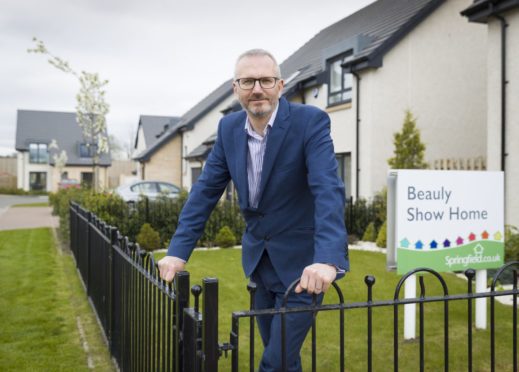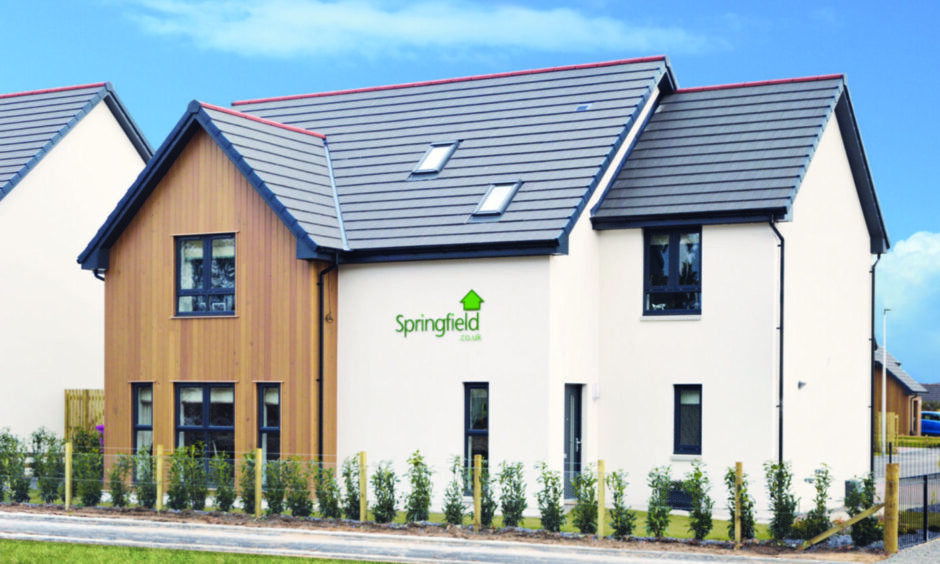Turnover at Moray-based housebuilder Springfield Properties is expected to pass the £200 million mark for the first time, with a near 50% year-on-year leap.
Increased sales of private and affordable homes and offloading plots to other builders have driven its growth, against a backdrop of continuing “chronic undersupply of housing” across Scotland, the group said.
In a trading update, the AIM-listed company said it expects to announce a 49% increase in revenue to approximately £215m when it publishes its final results for the year to the end of May.
It also forecast a “substantial” rise in pre-tax profits and a £50m reduction of its debt to around £21m.
Private house sales driving growth
The Elgin-headquartered group said private housing continued to be the largest contributor to its revenue.
It highlighted sales during the period at its Linkwood Village in the Moray town, as well as three developments launched under its Dawn Homes and Walker Group brands.
In the affordable housing sector, Springfield reported a “substantial increase in revenue and completions” in the second half of the year, adding it had started work on “multiple” new developments due to be completed in the current financial year.
Last month the group announced it had sold approximately 200 plots across two of its large developments in the Edinburgh area to two unnamed national housebuilders.
Chief executive Innes Smith said: “This has been an excellent year for Springfield.
We have achieved our highest ever annual revenue – exceeding £200m for the first time – based on significant growth in both our private and affordable housing.
“We have substantially reduced our net debt position, demonstrating our ability to generate cash, and our strategic land sales towards the end of the year reflect our capacity to realise value from our large, high-quality land bank.”
Mr Smith continued: “A key driver of our growth has been the greater popularity of the spacious homes that we provide, with private gardens and easy access to surrounding greenspace, particularly at our village developments.
At the same time, there continues to be a chronic undersupply of housing of all tenures across Scotland.
“Thanks to the strength of our offer and of our partnerships, which will now include the delivery of homes for the private rented sector, we are exceptionally well-positioned to help meet this housing demand and provide great places for people to live, building quality homes and creating sustainable communities.”
At the start of June, Springfield said it expected its performance in 2020-21 to be “ahead of market expectations” and forecast a 20% year-on-year increase in profits when it announces its final results for the year in September.
The group recorded turnover of £144.4m and adjusted pre-tax profits of £10.2m in 2019-20.
Mr Smith said the group also intends to announce how it plans to formalise its approach to sustainability in September, having identified a board member to lead the work.
The company’s share price had risen 3.98% to 170.00p by the end of Thursday trading.

